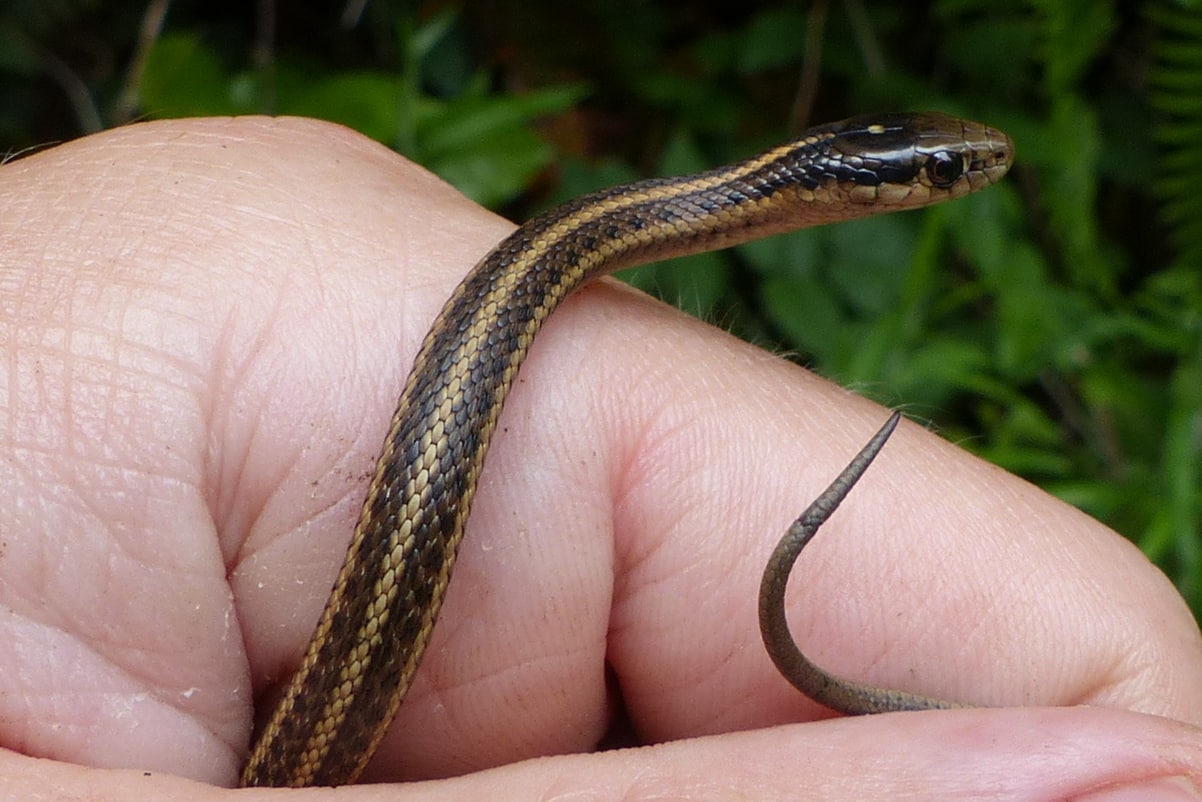
The Northwestern Garter Snake, also known as Thamnophis ordinoides, is a fascinating reptile that can be found in the northwestern regions of North America. Known for its vibrant colors and non-aggressive nature, this snake has captured the curiosity of wildlife enthusiasts and reptile lovers alike. In this article, we will delve into 13 fascinating facts about the Northwestern Garter Snake that will shed light on its behavior, habitat, diet, and unique characteristics. From its distinctive color patterns to its surprising ability to give birth to live young, the Northwestern Garter Snake is truly a remarkable species. So, grab your magnifying glass and join us on this reptilian adventure as we explore the intriguing world of the Northwestern Garter Snake!
Key Takeaways:
- Northwestern garter snakes are colorful, adaptable, and essential for maintaining ecological balance in the Pacific Northwest. They play a crucial role in controlling small animal populations and are protected by conservation efforts.
- With their vibrant appearance and unique behaviors, Northwestern garter snakes are fascinating creatures that thrive in diverse habitats. Their ability to give birth to live young and their long lifespan make them an integral part of the ecosystem.
The Northwestern garter snake is a common sight in the Pacific Northwest.
The Northwestern garter snake, scientifically known as Thamnophis ordinoides, is prevalent in the Pacific Northwest region of North America, including the states of Oregon, Washington, and parts of British Columbia in Canada. It is a non-venomous snake belonging to the Colubridae family.
They have a distinct appearance.
The Northwestern garter snake is typically identified by its slender body, which can range from 18 to 50 inches in length. It features a coloration pattern that includes a dark green or brown base with three yellowish stripes running along its back. These stripes often appear vivid and vibrant, making the snake easily recognizable.
They are highly adaptable.
One of the reasons for the widespread presence of Northwestern garter snakes is their ability to thrive in diverse habitats. They can be found in a variety of ecosystems, including grasslands, forests, wetlands, and even suburban areas. This adaptability enables them to survive and reproduce in various environmental conditions.
Northwestern garter snakes are primarily active during the day.
Unlike some snake species, Northwestern garter snakes are diurnal, meaning they are most active during daylight hours. They can often be found basking in the sun to regulate their body temperature. This behavior makes them more visible and easier to spot compared to nocturnal snakes.
They are skilled swimmers.
The Northwestern garter snake is proficient in both terrestrial and aquatic environments. They are excellent swimmers and can often be observed near bodies of water such as streams, ponds, and marshes. They are known to feed on small amphibians, fish, and invertebrates found in these aquatic habitats.
They give birth to live young.
The reproductive strategy of Northwestern garter snakes is viviparous, which means they give birth to live young rather than laying eggs. This adaptation allows the offspring to have a higher chance of survival as they are born fully developed and independent.
Northwestern garter snakes play an essential role in the ecosystem.
As predators, these snakes help control the population of small mammals, amphibians, and invertebrates in their habitat. They contribute to maintaining the ecological balance and serve as indicators of the overall health of the ecosystem.
They possess mild venom.
While not considered dangerous to humans, Northwestern garter snakes do possess mild venom. However, their venom is not potent enough to pose a significant threat to humans, and bites are rare occurrences. They are generally docile and prefer to flee rather than engage in confrontations.
They exhibit territorial behavior.
Northwestern garter snakes are known to establish and defend their territories. Males are particularly territorial during the breeding season and may engage in aggressive behaviors to secure mating opportunities. These behaviors can include wrestling and combat dancing to assert dominance.
Their diet consists of a variety of prey.
Northwestern garter snakes have a versatile diet, feeding on a range of small animals. This includes earthworms, slugs, snails, small mammals, birds, eggs, and insects. They have a unique jaw structure that allows them to consume larger prey than their body size would suggest.
They rely on camouflage for protection.
Camouflage is a defense mechanism employed by Northwestern garter snakes to protect themselves from predators. Their coloration and patterns blend in with their surroundings, allowing them to remain hidden and avoid detection. This camouflage helps them both while hunting and when trying to avoid being hunted.
Northwestern garter snakes have a long lifespan.
Under favorable conditions, Northwestern garter snakes can live up to 10 years or more in the wild. Factors such as habitat quality, availability of food, and protection from predators play a role in determining their lifespan.
They are protected by conservation efforts.
Due to habitat loss and fragmentation, Northwestern garter snakes, along with many other snake species, face conservation challenges. Efforts are being made to protect their natural habitats and raise awareness about their importance in the ecosystem. These conservation measures help ensure the survival of these fascinating snakes for future generations to appreciate and admire.
Conclusion
In conclusion, the Northwestern garter snake is a fascinating creature with unique traits and behaviors. From its ability to adapt to various environments to its intriguing mating rituals, this snake has captured the attention of researchers and nature enthusiasts alike. Its distinctive coloration and harmless nature make it a common sight in the Northwestern regions of North America. Despite its small size, it plays a significant role in controlling the populations of rodents and other small creatures. Learning about the Northwestern garter snake is not only informative but also helps us appreciate the diversity of wildlife in our surroundings. Next time you encounter this snake, remember these 13 fascinating facts and admire the incredible adaptations that allow it to thrive in its natural habitat.
FAQs
Q: What does the Northwestern garter snake look like?
A: The Northwestern garter snake is a slender reptile with a length ranging between 18 to 24 inches. It has a distinctive pattern consisting of horizontal yellow or greenish stripes along its darker-colored body.
Q: Are Northwestern garter snakes venomous?
A: No, Northwestern garter snakes are not venomous. They are harmless to humans and pose no significant threat.
Q: Where can Northwestern garter snakes be found?
A: Northwestern garter snakes are mainly found in the Northwestern regions of North America, including parts of British Columbia, Washington, Oregon, and Idaho.
Q: What do Northwestern garter snakes eat?
A: These snakes primarily feed on small prey such as insects, earthworms, frogs, and small fish. They are known to be opportunistic feeders.
Q: How do Northwestern garter snakes reproduce?
A: During the mating season, male Northwestern garter snakes engage in a behavior known as “mating balls,” where multiple males try to court a single female. The female gives live birth to a litter of around 20-40 juveniles.
Q: Are Northwestern garter snakes endangered?
A: The Northwestern garter snake is not currently listed as an endangered species. However, habitat destruction and pollution can pose threats to their populations in some areas.
Q: Can Northwestern garter snakes swim?
A: Yes, these snakes are strong swimmers and are often found near water sources such as streams, ponds, and marshes.
Q: How long do Northwestern garter snakes live?
A: Northwestern garter snakes have an average lifespan of 4 to 7 years, although some individuals have been known to live up to 10 years.
Was this page helpful?
Our commitment to delivering trustworthy and engaging content is at the heart of what we do. Each fact on our site is contributed by real users like you, bringing a wealth of diverse insights and information. To ensure the highest standards of accuracy and reliability, our dedicated editors meticulously review each submission. This process guarantees that the facts we share are not only fascinating but also credible. Trust in our commitment to quality and authenticity as you explore and learn with us.


